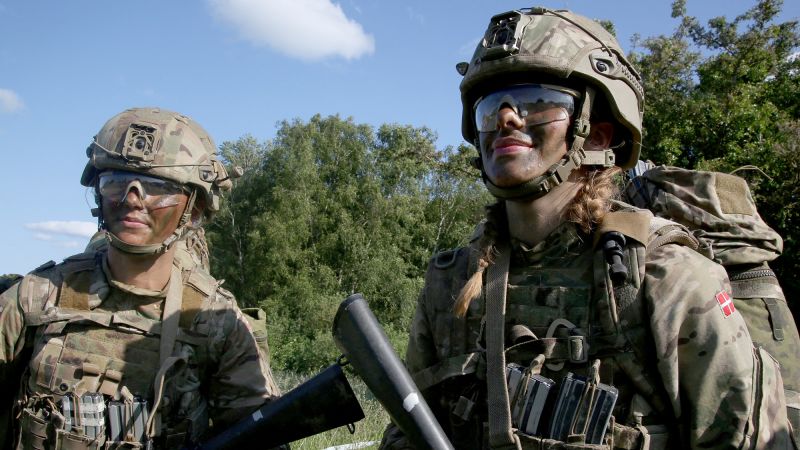Denmark has announced a significant expansion of its military conscription policy to include women, marking a pivotal shift in the Nordic country’s defense strategy. This move, effective from July 1, 2025, comes as Denmark seeks to bolster its military capabilities in response to increased security concerns across Europe. The Danish parliament passed the law in June 2023, mandating that women turning 18 after the specified date register for assessment days for potential conscription, aligning their obligations with those already in place for men.
Previously, Danish women could join the military voluntarily, with around 24% of recruits in the past year being female. The new legislation aims to increase this number significantly. “In the world situation we’re in right now, it’s necessary to have more conscripts, and I think that women should contribute to that equally, as men do,” said Katrine, a recruit in the Danish Royal Life Guard, in an interview with Reuters.
Context and Historical Background
The decision to include women in conscription is not entirely unprecedented in Europe. Countries like Norway and Sweden have already implemented similar measures, reflecting a broader trend towards gender equality in military service. Denmark’s move is seen as a response to the evolving geopolitical landscape, particularly in light of recent tensions and conflicts that have underscored the need for robust national defense systems.
Denmark’s military traditionally relied on a lottery system to fill its ranks, with volunteers given priority. However, the current global climate has prompted a reevaluation of this approach. The Danish armed forces are now in the process of adapting their infrastructure to better accommodate female recruits, including modifications to barracks and equipment.
Adjustments for Inclusivity
As Denmark prepares to welcome more women into its military ranks, significant adjustments are underway to ensure inclusivity. “There are different things that they need to improve, especially in terms of equipment. Right now, it’s made for men, so perhaps the rucksacks are a bit too large and the uniforms are large as well,” Katrine noted, highlighting the practical challenges faced by female recruits.
The Danish military is actively working to address these issues, ensuring that equipment and facilities are suitable for all recruits. This includes tailoring uniforms and gear to better fit women, as well as making necessary modifications to living quarters.
Strategic Implications and Future Outlook
This development follows Denmark’s recent agreement with NATO allies to increase defense spending. The country plans to gradually extend the duration of conscription from four months to 11 months by 2026, and to expand the number of recruits from the current 5,000 to 7,500 by 2033. These measures are part of a broader strategy to enhance Denmark’s defense readiness in an increasingly uncertain world.
By the Numbers: Denmark aims to increase military recruits to 7,500 by 2033, with conscription duration extended to 11 months by 2026.
The inclusion of women in conscription is expected to have far-reaching implications, not only for Denmark’s military capabilities but also for societal perceptions of gender roles. As more countries consider similar policies, Denmark’s experience could serve as a model for integrating women into military service on a larger scale.
Looking ahead, the success of this initiative will depend on the effective implementation of inclusive practices and the ability to adapt to the changing needs of a diverse military force. As Denmark navigates these changes, the eyes of the world will be watching closely, offering a potential blueprint for other nations grappling with similar challenges.
